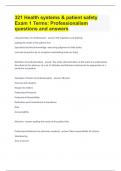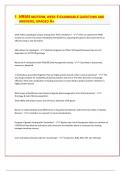Summary
Summary Thesis Proposal_SCM THESIS PROPOSAL & LITERATURE STUDY_325238-M-3_Msc Supply Chain Management
- Course
- Institution
Thesis Proposal Excellence: Scored 7.5! Witness the winning formula! This stellar thesis proposal awarded an impressive 7.5, is your key to academic success. Crafted with precision and backed by expertise, this proposal is your ticket to a remarkable thesis journey.
[Show more]












